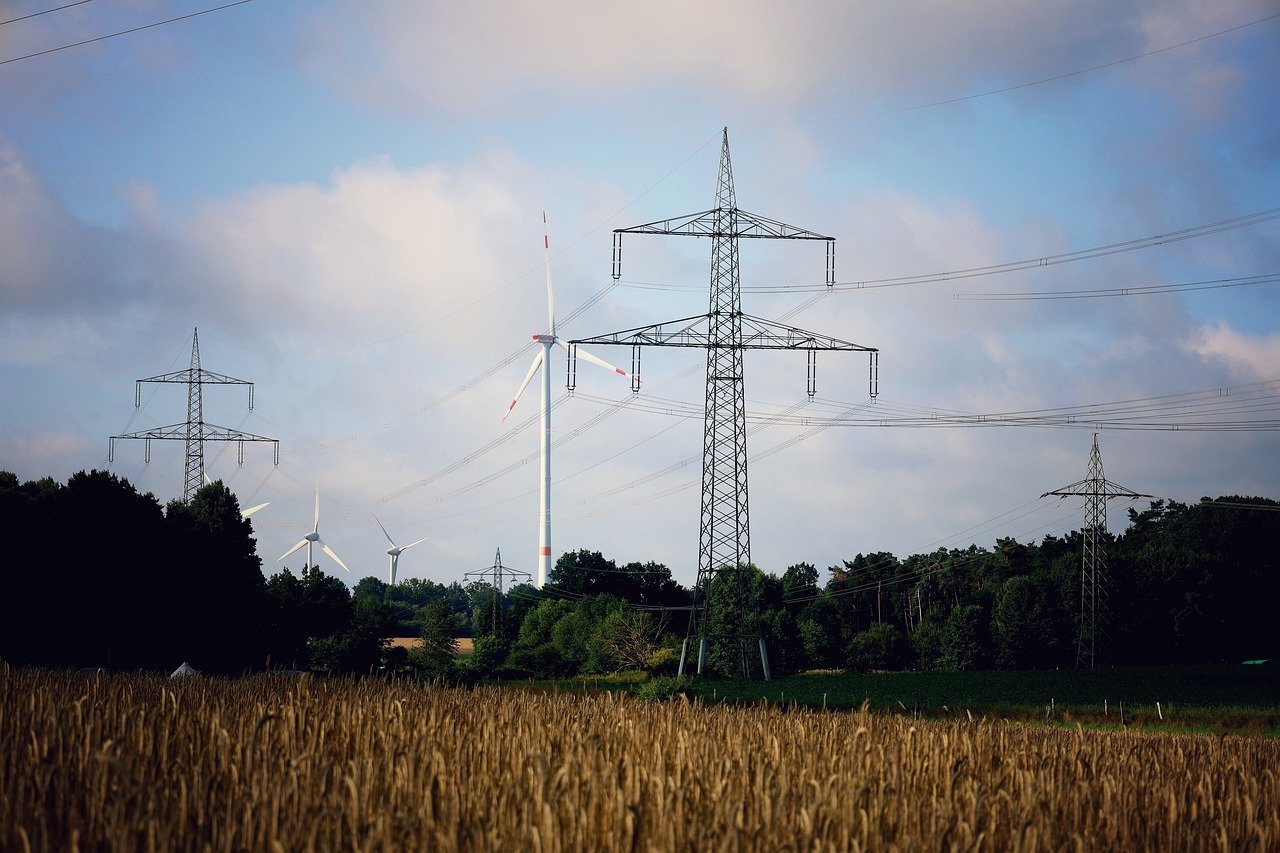How to Build a Sustainable Home - Essential Tips
Creating a sustainable home is more than just a trend; it's a responsible choice for the environment and your finances. By incorporating key strategies and practices into your home construction, you can significantly reduce energy consumption and minimize your environmental impact. Let's explore some essential tips to help you build a sustainable home that benefits both the planet and your wallet.

Energy-Efficient Design
When it comes to building a sustainable home, energy-efficient design plays a crucial role in reducing your environmental footprint and cutting down on utility costs. By incorporating smart design strategies, you can create a living space that maximizes energy savings and promotes eco-friendliness.
One key tip for energy-efficient design is to optimize the layout of your home. Consider the placement of windows, doors, and rooms to maximize natural light and ventilation. By harnessing natural light, you can reduce the need for artificial lighting during the day, saving energy and creating a bright, inviting atmosphere.
Another essential aspect of energy-efficient design is the orientation of your home. By aligning your house to take advantage of the sun's path, you can leverage passive solar heating in the winter and minimize heat gain in the summer. This simple adjustment can significantly reduce your reliance on heating and cooling systems, leading to long-term energy savings.
Choosing the right materials is also key to energy efficiency. Opt for insulated walls, roofs, and windows to enhance your home's thermal performance. Additionally, selecting energy-efficient appliances and HVAC systems can further reduce energy consumption and lower your carbon footprint.
Furthermore, incorporating shading devices like awnings, overhangs, or trees can help regulate indoor temperatures and reduce the need for air conditioning during hot months. By strategically placing these elements, you can create a comfortable living environment while minimizing energy usage.
In summary, energy-efficient design is a cornerstone of sustainable home construction. By focusing on layout optimization, orientation, material selection, and shading strategies, you can create a home that prioritizes energy efficiency, environmental responsibility, and long-term cost savings.

Renewable Energy Sources
When it comes to creating a sustainable home, integrating renewable energy sources plays a pivotal role in reducing your environmental footprint and energy costs. Renewable energy sources, such as solar panels and wind turbines, provide a clean and efficient way to power your home while minimizing reliance on traditional energy sources.
Solar panels are one of the most popular renewable energy options for homeowners looking to harness the power of the sun. By converting sunlight into electricity, solar panels can significantly reduce your reliance on the grid and lower your monthly energy bills. Additionally, advancements in solar technology have made it more accessible and cost-effective for residential use.
Wind turbines are another effective renewable energy source that can be integrated into your home's energy system. By harnessing the power of wind, turbines generate electricity that can be used to power your appliances and lighting. Depending on your location and wind conditions, wind turbines can be a valuable addition to your sustainable home.
When considering renewable energy sources for your home, it's essential to evaluate your energy needs, property size, and environmental conditions. Consulting with renewable energy experts can help you determine the most suitable options for your home and ensure optimal performance and efficiency.

Water Conservation Techniques
Water conservation techniques play a vital role in creating a sustainable home environment that minimizes water wastage and promotes efficient usage. One effective method is the installation of water-saving fixtures such as low-flow toilets and faucets. These fixtures are designed to reduce water consumption without compromising performance, helping to conserve water resources effectively.
Another innovative technique for water conservation is the implementation of rainwater harvesting systems. These systems collect rainwater from rooftops and store it for various non-potable uses such as watering plants, washing cars, or flushing toilets. By utilizing rainwater in this manner, homeowners can significantly reduce their reliance on municipal water sources, contributing to water conservation efforts.
Additionally, incorporating drought-resistant landscaping in your sustainable home can further enhance water conservation. By selecting native plants that require minimal irrigation and maintenance, you can create a beautiful and sustainable outdoor environment while reducing water usage. These plants are well-adapted to local climate conditions, making them resilient to droughts and reducing the need for excessive watering.
Furthermore, efficient irrigation systems such as drip irrigation or smart irrigation controllers can help optimize water usage in landscaping. These systems deliver water directly to the roots of plants, minimizing evaporation and runoff, thus maximizing the efficiency of water distribution. By utilizing technology and smart design in landscaping, homeowners can achieve significant water savings while maintaining a lush and green outdoor space.
Overall, integrating water conservation techniques into your sustainable home design is essential for promoting environmental stewardship and responsible water management. By adopting these practices, you can contribute to water sustainability efforts, reduce water bills, and create a more eco-friendly living space for yourself and future generations.

Green Building Materials
When it comes to building a sustainable home, choosing the right is essential for reducing environmental impact and promoting eco-friendly practices. These materials not only contribute to a healthier living space but also play a significant role in conserving natural resources and reducing carbon footprint.
One popular choice for sustainable flooring is bamboo, known for its rapid growth and renewability. Bamboo flooring offers durability and a unique aesthetic appeal while being a sustainable alternative to traditional hardwood floors. Additionally, using recycled glass countertops in your kitchen or bathroom can add a touch of elegance while promoting recycling and reducing waste.
Another eco-friendly option to consider is reclaimed wood, which gives a rustic and charming look to your home while preventing the need for new timber harvesting. Using reclaimed wood not only adds character to your space but also helps in preserving forests and reducing deforestation.
When selecting , it is crucial to consider their environmental impact throughout their lifecycle. Look for materials that are sustainably sourced, have low emissions, and can be recycled or reused easily. By choosing these materials, you can contribute to a more sustainable future while creating a unique and environmentally conscious home.

Waste Reduction Strategies
When it comes to building a sustainable home, waste reduction strategies play a crucial role in minimizing environmental impact and promoting a greener living environment. By implementing effective waste reduction practices, you can contribute to a more sustainable future while also reducing your ecological footprint.
One key waste reduction strategy is to minimize construction waste during the building process. By carefully planning and managing materials, you can reduce the amount of waste generated during construction. Additionally, recycling construction materials such as wood, metal, and concrete can help minimize waste and promote sustainability.
Another effective waste reduction strategy is to incorporate durable and long-lasting materials in your home design. By choosing high-quality materials that have a longer lifespan, you can reduce the need for frequent replacements and repairs, ultimately reducing waste generation over time.
Furthermore, adopting a minimalist approach to home design and decor can help reduce unnecessary consumption and waste. By focusing on essential items and avoiding excess clutter, you can create a more sustainable living space that prioritizes functionality and efficiency.
Consider reusing and repurposing items whenever possible to minimize waste and extend the lifespan of materials. Upcycling furniture, using reclaimed wood, and finding creative ways to give old items new life can significantly reduce waste generation in your home.
Lastly, implementing a comprehensive recycling system in your home can help maximize waste diversion and promote a circular economy. Set up designated recycling bins for different materials, educate household members on proper recycling practices, and ensure that recyclable items are properly sorted and disposed of.

Indoor Air Quality Solutions
Ensuring good indoor air quality is essential for creating a healthy and comfortable living environment in your sustainable home. Proper ventilation systems play a crucial role in circulating fresh air and removing pollutants. Investing in high-quality air filters for your HVAC system can help trap dust, allergens, and other harmful particles, improving the overall air quality indoors.
When selecting paints for your home, opt for non-toxic and low-VOC (volatile organic compounds) options to minimize harmful emissions. These eco-friendly paints not only contribute to better indoor air quality but also promote a safer environment for your family. Additionally, incorporating houseplants can act as natural air purifiers, absorbing toxins and releasing oxygen, further enhancing the air quality in your home.
Another aspect to consider is the use of natural cleaning products that are free from harsh chemicals. These products are gentle on both your health and the environment, reducing the presence of harmful substances in the air. By choosing environmentally friendly cleaning solutions, you can maintain a clean and healthy indoor environment without compromising air quality.
Proper humidity control is also vital for indoor air quality. Excess moisture can lead to mold growth and worsen air quality, while low humidity levels can cause discomfort. Installing a humidifier or dehumidifier as needed can help regulate indoor humidity levels, creating a healthier and more comfortable living space. Additionally, regular maintenance of HVAC systems and air ducts is crucial to prevent the buildup of dust and debris, ensuring optimal air quality throughout your home.

Smart Home Technology Integration
Smart home technology integration is revolutionizing the way we interact with our living spaces. By incorporating cutting-edge devices and systems, homeowners can create a more efficient, comfortable, and secure environment. From automated lighting and thermostats to security cameras and voice assistants, the possibilities are endless when it comes to smart home technology.
One of the key benefits of smart home technology is its ability to optimize energy usage. Smart thermostats can learn your preferences and adjust the temperature accordingly, saving energy and reducing utility bills. Additionally, smart lighting systems can be programmed to turn off when not in use, further conserving electricity.
Enhancing comfort is another advantage of integrating smart technology into your home. Imagine being able to control the ambiance of your living room with a simple voice command or remotely adjusting the temperature before you arrive home. These conveniences not only make daily life easier but also contribute to a more enjoyable living experience.
Security is a top priority for many homeowners, and smart home technology offers advanced solutions to safeguard your property. From smart locks that can be controlled via smartphone to security cameras with motion detection capabilities, you can monitor and protect your home from anywhere in the world. These features provide peace of mind and enhance the overall safety of your sustainable home.
Moreover, smart home technology can seamlessly integrate with other sustainable practices in your home. For example, by connecting your renewable energy systems to a smart monitoring platform, you can track energy production and consumption in real-time, allowing for better optimization and efficiency. This synergy between sustainability and technology creates a harmonious and environmentally conscious living environment.

Certifications and Green Building Standards
When it comes to creating a truly sustainable home, understanding certifications and green building standards is key. These certifications serve as guidelines to ensure that your home meets specific environmental and efficiency criteria, making it more eco-friendly and energy-efficient. One of the most well-known certifications in the industry is Leadership in Energy and Environmental Design (LEED), which sets the standard for sustainable building practices.
Obtaining a green certification for your home involves meeting certain requirements related to energy efficiency, water conservation, indoor air quality, and materials selection. By adhering to these standards, you not only contribute to a healthier environment but also benefit from potential cost savings in the long run. Green building certifications can also increase the value of your home and appeal to environmentally conscious buyers.
When pursuing a green certification, it's essential to research the specific requirements and process involved. Working with professionals who are experienced in sustainable construction can help streamline the certification process and ensure that your home meets all necessary criteria. Additionally, staying informed about the latest developments in green building standards can help you make informed decisions throughout the construction and certification process.
Frequently Asked Questions
- What are the benefits of building a sustainable home?
Building a sustainable home offers numerous benefits, including reduced energy costs, lower environmental impact, improved indoor air quality, and increased property value. By incorporating energy-efficient design, renewable energy sources, and green building materials, you can create a more comfortable and eco-friendly living space.
- How can I integrate renewable energy sources into my home?
You can integrate renewable energy sources like solar panels or wind turbines by assessing your energy needs, determining the most suitable system for your location, and working with professional installers. Proper maintenance and monitoring of renewable energy systems are essential to ensure optimal performance and sustainability.
- What are some effective waste reduction strategies for a sustainable home?
To reduce waste in a sustainable home, consider using recycled materials, repurposing items, and implementing a waste management plan during construction and daily living. Recycling, composting, and donating items can also help minimize environmental impact and promote a greener lifestyle.
- How can smart home technology enhance sustainability in my home?
Smart home technology can optimize energy usage by controlling lighting, heating, and cooling systems efficiently. It can also improve security through remote monitoring and enhance comfort by adjusting settings based on occupancy and preferences. Integrating smart devices and automation can lead to a more sustainable and convenient living environment.



















